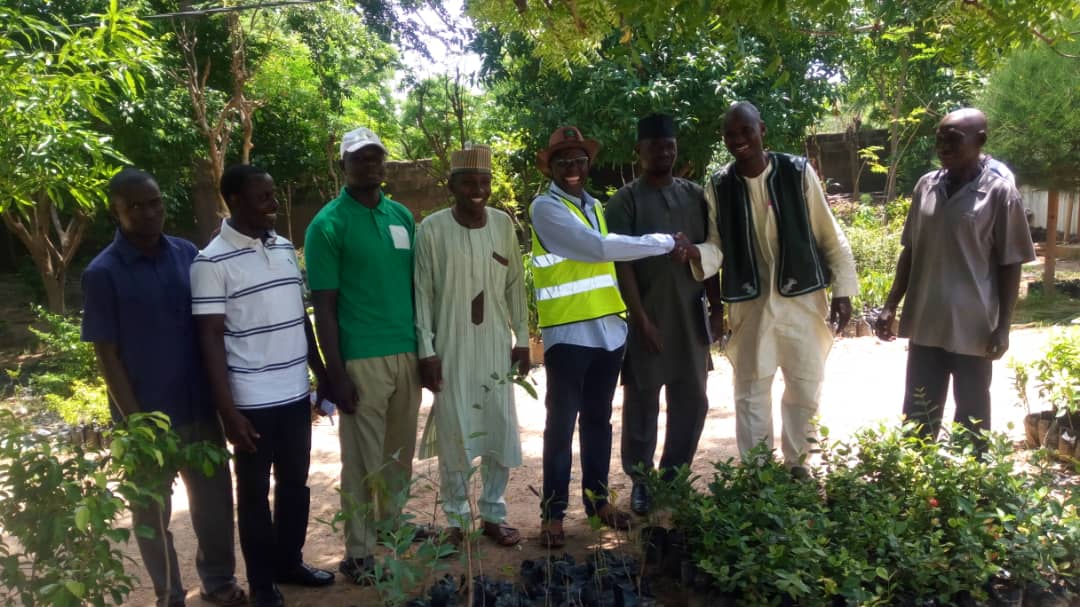
Native peoples are strong and their movements are getting stronger. Picture from Hawai’i.
Journalist: What do you think of Western civilization?
Gandhi: I think it would be a good idea.
“Take it from this old rich white man. Cross-cultural communication that seeks truthful expression of how to live within nature and with others who are different is vital. No one culture has all the answers, but together we almost certainly do, to such pressing matters that threaten our shared existence as perma-war, injustice, inequity, and ecological collapse. We need to listen to each other and seek a synthesis of the Western and non-Western, that reflects an ecology and humanity ethic truly worthy of the moniker “Universal Civilization”. — Dr. Glen Barry
Earth Meanders, Deep Ecology Essays by Dr. Glen Barry
WESTERN CIVILIZATION IS A MYTH
If ever a society was conceived in original sin, it is the Western democracies, Europe and North America in particular. Dominance of Western Civilization is based upon centuries of murder and enslavement of indigenous peoples and nature that continue to this day.
Some 500 years ago European tribes spilled forth into the world in a wave of ecological colonialism. Thus began an ongoing onslaught of murderous genocide, enslavement, rape, and ecocide in the name of christianity, capitalism, and country. Characterized by a pernicious greed and certainty in their own superiority; European cultures built a mysterious worldview that justified their callous mistreatment of others and destruction of the natural world.
Key among the sinister Eurocentric worldview was the mistaken notion that natural ecosystems, non-European people, and other sentient life existed solely to be exploited for their profit. Millions of plant and animal species, thousands of ancient cultures and their knowledge, and innumerable other human beings with different appearances and worldviews existed only to serve Europeans and their colonies, and if they refused, their massacre was justified. Indeed, given their less than fully human nature, eradication through murder of other cultures was the civilized thing to do.
Not unlike a cancerous mutation, at a global scale a deeply flawed ecocidal and genocidal worldview radiated forth that pursued material comfort at the expense of other people, life forms, and the environment.
And the invading murderers had the gall to call themselves Western Civilization.
European and American exceptionalist rhetoric does not align with the history of settlers’ colonialist expansion. Or the continued ramifications upon the Earth, indigenous peoples, and plants and animals arrayed into ecosystems, of this miserable worldview being nearly universally accepted. Such a brutal and evil worldview has metastasized into our current over-populated, inequitable, unjust, and war-torn world; and threatens, after having destroyed nature and other more biocentric cultures, to topple the biosphere and end being.
But not before much more dramatic suffering and pain, of the sort first inflicted upon native peoples by Western civilization.
KNOW YOUR HISTORY
In the Americas alone around 100 million people – about 90% of the original population of indigenous peoples – died from Western disease – including smallpox, measles, and cholera; or were murdered and/or violently displaced including through rape, warfare, and genocide by settlers.
Firsthand accounts of the slaughter are replete with tales of entire tribes being massacred, as children were pulled from their parents and impaled, women were raped and enslaved, as men fighting to protect their families and land were wantonly murdered.
Why? Because they were savages and would not surrender their land. And Europeans were the chosen ones.
An estimated 12.5 million Africans were kidnapped and shipped to the Americas with some 10.7 million surviving the journey, of which about 1/3 of a million were tortured and enslaved in North America. The brutal savagery of slavery is difficult to comprehend, yet was similarly justified by claims of superiority of white christian capitalist culture.
Granted, slavery, mass migration, and warfare existed for a long time and were practiced by many cultures. But none so ruthlessly and at such scale as the genocide wrought by Western civilization’s expansion. Such savagery has continued into world wars, carpet bombing of civilians, militarism to steal resources such as oil, and the final clearance of natural ecosystems that make life possible.
Over 80% of Earth’s naturally evolved old-growth forests have been mowed, around half of the world’s land mass is under some form of cultivation, oceans are dying as they are scraped of life, water and fertile soil are increasingly scarce, and our very climate is spinning out of control. The biosphere is dying.
Such is the history of western civilization.
It is not my intention to downplay advances such as personal liberty, material comfort, and relative democracy associated with western civilization. But it has come at a heavy price, leaving traumatized societies and brutalized natural systems and animals, placing at risk the well-being of future generations and the very habitability of our Earthly home. And given the rise of fascism in Western democracies, such advances appear to be fragile and impermanent.
Western civilization has certainly not been civilized given any objective measure. The marvels found in entire cities such as Amsterdam, Venice, and New York City have been built upon plunder and murder.
Western abuses of indigenous peoples continue unabated to this day, as indigenous land and peoples are routinely violated. Genocide continues to be waged on native peoples as industrial capitalism seeks to access and liquidate every last natural ecosystem. Out of such an abominable worldview has come an over-populated world that has wantonly destroyed its environment, is in a state of perma-war, as the biosphere nears final collapse. And now in a last wave of outrage, indigenous and other non-Western peoples are the most impacted upon by abrupt climate change and other impacts of collapsing natural ecosystems.

The author has been blessed to play a small supporting role in many successful indigenous campaigns including We Are Mauna Kea (pictured), Standing Rock, and many others
EMBRACING NATIVE KNOWLEDGE
There are innumerable worldviews regarding humanity’s place in the cosmos and understanding of right-living. Important knowledge exists such as the use of plant materials, how to sustain yourself from an ecosystem without degrading or destroying it, and how to minimize conflict. Native knowledge encapsulated in ritual has kept water, oceans, land, and fields largely intact for millennia. Along with natural ecosystems, this indigenous knowledge has been nearly wiped from the surface of the Earth by Western settlers.
It is not my intent to over-romanticize non-Western cultures. Many were warlike and locally over-exploited environments. But never has a culture matched Western imperialism’s grim need to proselytize, force their worldview upon others, and murder all those that resisted; including global claims of European sovereignty to non-Western land and resources. Huge amounts of knowledge have been lost regarding how to sustainably live at peace with Earth and each other. Sadly, many indigenous peoples have embraced the expansionist ecocidal behaviors of their colonizers.
Much native knowledge regarding justice and truth as known by indigenous peoples continues to exist, and is present in contemporary movements ranging from Black Lives Matter to Standing Rock, and millions of active and empowered local native communities. Globally indigenous, non-Western peoples are leading in demonstrating ways of being that do not kill others including destroying our shared natural ecosystems.
Daily the ill-gotten progeny of colonizing settlers are being being shown (if we care enough to notice), that there are other ways of being that do not depend upon systematic murder and ecocide to fuel economic growth for some (and misery and death for the rest). In Western democracies there is much discussion of rights. But rarely does this include the rights of the native people whose lands were stolen, or of natural ecosystems and their wildlife to continue to exist.
Native cultures and their peoples are strong, and their movements getting stronger. With the humility of a reformed settler, seek to understand and support social movements based upon indigenous sentiments. Join together to end fossil fuels, protect and restore old-growth forests, grant opportunity for self-reliance to all peoples, and resist continued human rights abuses upon those first peoples who have suffered enough.
THE WAY TO OUR SHARED HOME
Globally 370 million indigenous peoples from about 5,000 groups continue to live in their natural locales, yet their rights continue to be suppressed due to the legacy of colonialism, and ongoing authoritarian nationalism. It is estimated these cultures continue to control lands (however precariously in the face of industrial expansion) that hold 80% of Earth’s remaining biological heritage, and some of the last large functioning ecosystems that make Earth habitable.
Around the world indigenous based and other non-Western social movements are flourishing. Yet sadly, intersectionality shows us that numerous systems of oppression and domination continue to lead to discrimination against all who are not rich white males. Systematic racism continues to exist and pernicious attacks upon natural systems and their rightful occupants continue to be the rule.
Nonetheless, take it from this old rich white man. Cross-cultural communication that seeks truthful expression of how to live within nature and with others who are different is vital. No one culture has all the answers, but together we almost certainly do, to such pressing matters that threaten our shared existence as perma-war, injustice, inequity, and ecological collapse.
We need to listen to each other and seek a synthesis of the Western and non-Western, that reflects an ecology and humanity ethic truly worthy of the moniker “Universal Civilization”. Imagine and build a world that protects and renatures water and soil, forests and wetlands, oceans and cultures; based upon the combined knowledge and experience of the thousands of cosmological worldviews which have evolved as Homo sapiens peered from the forests to the stars.
Technology, commerce, and governance will all have a role in the coming Universal Civilization; as the rights of those that are smart and work hard to have more are protected. But the personal accumulation of wealth – the bedrock of western thought – will no longer come at the expense of unmet basic human needs or a living Earth that can essentially last forever. Small government and business will serve bioregional communities, as all have the opportunity to live well ensconced within natural life-giving ecosystems.
Salvation for the human family and all species requires atoning for the wrongs wrought by Western lack of civilization. Reparations must be made both to indigenous peoples and the natural world. There is much de-colonizing and ecosystem regeneration yet to occur; as all knowledge possessed by Western thought AND indigenous cultures regarding justice, equity, peace, and ecology is truly embraced. Let’s come together to make amends for the West’s uncivilized past, as we once again embrace indigenous thought more attuned to nature.










